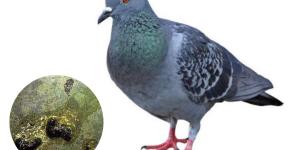Perianal Fistula in Cats - Causes and Treatment



See files for Cats
Perianal fistulas in cats are a medical condition characterized by the formation of abnormal tunnels or tracts around the anal region. These fistulas can be quite painful and are often associated with other underlying health issues. While the exact prevalence of perianal fistulas in cats is not well-documented, the condition is considered relatively rare compared to other feline health problems. Since the problem involves swelling of the perianal area, it is also possible there are similar inflammatory processes which can be confused with a perianal fistula.
At AnimalWised, we look at the treatment and care of perianal fistula in cats. We also discover what similar conditions might be linked to a perianal fistula.
What is a perianal fistula in cats?
A perianal fistula in cats is a medical condition characterized by the formation of abnormal tunnels or tracts around the perianal region, which includes the area surrounding the anus. These fistulas can be quite painful and are often associated with other underlying health issues.
The condition is most commonly observed in middle-aged to older cats, with certain breeds being more prone to developing perianal fistulas, such as Himalayans and Persians. However, it can occur in cats of any breed or age.
Causes of perianal fistulas in cats
Perianal fistulas in cats can have various potential causes, although the exact underlying factors are not fully understood. Here are some of the possible causes that have been suggested:
- Immune-mediated factors: it is believed that immune dysfunction plays a role in the development of perianal fistulas in cats. The immune system may malfunction and initiate an inflammatory response in the perianal region, leading to the formation of fistulas. This immune-mediated component is often associated with disorders like inflammatory bowel disease (IBD) or immune-mediated diseases.
- Genetic predisposition: certain cat breeds such as Himalayans and Persians are considered more susceptible to developing perianal fistulas. This suggests a potential genetic predisposition to the condition. However, further research is needed to fully understand the genetic factors involved. Learn more about common diseases in Persian cats with our related article.
- Allergies: particularly food allergies or contact allergies to certain substances have been proposed as a possible trigger for perianal fistulas. Cats may develop an inflammatory response in the perianal region due to an allergic reaction, leading to the formation of fistulas. In some cases the perianal fistula will be accompanied by other signs of an allergic reaction. Although it is unlikely, there is the possibility of anaphylactic shock in cats.
- Bacterial or fungal infections: in some cases, bacterial or fungal infections in the perianal area may contribute to the development of perianal fistulas. These infections can cause persistent inflammation and tissue damage, leading to the formation of fistulas.
- Anal gland abnormalities: dysfunction or blockage of the anal glands, which are responsible for producing and releasing anal gland secretions, may be associated with perianal fistulas. It is more common in older cats and these cats may need their anal sacs expressed manually. Abnormalities in the anal glands can lead to inflammation and the formation of fistulas.
It's important to note that perianal fistulas in cats can have a multifactorial nature, meaning that several factors may contribute to their development. In many cases, it is likely a combination of immune dysfunction, genetic predisposition and other triggers that lead to the formation of perianal fistulas.
Understanding the underlying causes of perianal fistulas in cats is essential for developing effective treatment strategies and preventive measures. However, due to the complexity of the condition, further research is needed to uncover the precise mechanisms and contributing factors involved.
Symptoms of perianal fistula in cats
Symptoms of perianal fistula in cats typically include:
- Swelling, redness, and inflammation around the anus.
- Formation of deep, painful ulcers, nodules, or draining tracts.
- Intense itching and discomfort.
- Foul odor due to secondary bacterial infection.
- Changes in behavior, such as increased aggression or reluctance to be handled.
Diagnosing the cause of perianal fistula in cats can be challenging, as it requires ruling out other possible causes of similar symptoms. A veterinarian will conduct a thorough physical examination and may perform additional tests, such as skin scrapings, bacterial cultures and even biopsy of affected tissue to confirm the diagnosis.
Learn about related problems with a cat's anal area with our article on why a cat's anus is swollen and red.

Treatment of perianal fistula in cats
Treatment for perianal fistula in cats aims to manage the symptoms, control inflammation and promote healing. This usually involves a combination of medical and surgical interventions. The veterinarian may prescribe medications such as corticosteroids, antibiotics, immunosuppressive drugs, and pain relievers to alleviate discomfort and reduce inflammation. In severe cases, surgical removal of the affected tissue or reconstructive surgery may be necessary.
Additionally, identifying and addressing any underlying triggers or contributing factors, such as flea control, dietary changes, or management of concurrent allergies, can help manage the condition and prevent recurrence.
It's important to note that perianal fistula in cats is a chronic condition. Long-term management and monitoring may be necessary. Regular follow-up visits with the veterinarian are crucial to assess the cat's response to treatment and adjust the management plan as needed.
Boosting the cat's immune system
The use of drugs such as cyclosporine, tacrolimus or corticosteroids such as prednisone for cats is often successful, with very good efficacy but with long-term side effects that need to be considered. These drugs are administered orally and their effectiveness increases if they are supplemented by applying an ointment in the affected area that also includes them in their composition.
These drugs may reduce the cat's natural defenses, especially corticosteroids. This is something quite particularly problematic in the anal area. This is because the close proximity to the anus means bacteria proliferate. It is advisable to use an ointment that also includes antibiotics.
A great option are the compounds that are marketed for the treatment of otitis in dogs and cats. This is because most incorporate corticosteroids and antibiotics and many have a cream-like texture, making them very easy to apply. Any application or administration of drugs for your cat will need to be discussed with a qualified veterinarian.
Similar conditions to perianal fistula in cats
Several diseases and conditions in cats can present symptoms that may be mistaken for a perianal fistula. It's crucial to differentiate these conditions to ensure appropriate diagnosis and treatment. Here are some diseases and conditions that can be confused with a perianal fistula:
- Anal gland disease: anal gland abscesses or impactions can cause swelling, discomfort and even the formation of draining tracts around the perianal area. These symptoms can resemble those of a perianal fistula. Proper evaluation by a veterinarian is necessary to differentiate between the two conditions.
- Perineal hernias: perineal hernias occur when abdominal contents protrude through a weakened area in the perineal region. Cats with perineal hernias may exhibit symptoms such as swelling, pain, and difficulty defecating, which can be similar to perianal fistulas. Imaging studies, such as radiographs or ultrasound are often needed to confirm the diagnosis.
- Perianal tumors: certain types of tumors, such as perianal adenomas or carcinomas, can develop in the perianal region. These tumors can cause swelling, ulceration, and discharge, resembling the symptoms of a perianal fistula. Biopsy and histopathological examination are necessary to differentiate between these conditions.
- Anal sacculitis: anal sacculitis refers to inflammation and infection of the anal sacs, which are small glands located near the anus. This condition can cause pain, swelling and discomfort around the perianal area, mimicking the symptoms of a perianal fistula. Proper examination and diagnostic tests, such as anal sac fluid analysis, are required to differentiate between the two conditions.
- Gastrointestinal disorders: some gastrointestinal disorders, such as inflammatory bowel disease (IBD) in cats or colitis, can cause symptoms like diarrhea, straining during defecation and rectal inflammation. These symptoms may be similar to those of a perianal fistula. Comprehensive evaluation by a veterinarian, including fecal analysis and possibly endoscopy or biopsy, is necessary to distinguish between these conditions.
It is important to consult a veterinarian if a cat displays symptoms that resemble a perianal fistula or any other health issue. A proper examination, diagnostic tests and expert guidance are essential for an accurate diagnosis and appropriate treatment plan.
This article is purely informative. AnimalWised does not have the authority to prescribe any veterinary treatment or create a diagnosis. We invite you to take your pet to the veterinarian if they are suffering from any condition or pain.
If you want to read similar articles to Perianal Fistula in Cats - Causes and Treatment, we recommend you visit our Infectious diseases category.






